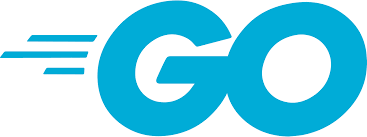
Go, also known as Golang, is a programming language developed by Google. It was created by Robert Griesemer, Rob Pike, and Ken Thompson and was first released in 2009. Go is designed to be simple, efficient, and productive, with a focus on readability and ease of use.
Key features of the Go programming language include:
Concurrency: Go has built-in support for concurrent programming through goroutines and channels. Goroutines are lightweight threads managed by the Go runtime, and channels are used for communication between goroutines, making it easier to write concurrent and parallel programs.
Garbage Collection: Go includes automatic memory management through a garbage collector, which helps developers avoid memory leaks and manual memory management issues.
Static Typing: Go is statically typed, meaning that variable types are defined at compile-time. This can help catch errors early in the development process.
Simplicity: Go has a simple and clean syntax that reduces the cognitive load on developers. It omits features that can lead to complex code and focuses on providing a small set of orthogonal features.
Standard Library: Go comes with a comprehensive standard library that includes packages for networking, cryptography, database access, and more. This helps developers write efficient and reliable programs without relying on third-party libraries for common tasks.
Cross-Platform: Go supports cross-compilation, allowing developers to build binaries for different operating systems and architectures from a single codebase.
Open Source: Go is an open-source programming language, and its development is guided by the Go community. The source code is available on platforms like GitHub, and contributions from the community are encouraged.
Go is commonly used in web development, networking tools, cloud computing, and systems programming. It has gained popularity for its performance, simplicity, and suitability for building scalable and concurrent applications. If you have specific questions or topics you'd like to explore further regarding Go, feel free to ask!
Fast Compilation: Go is known for its fast compilation times, which contributes to a quick development cycle. This can be particularly advantageous for large codebases and projects.
Statically Linked Binaries: Go produces statically linked binaries, which means that you can distribute a single executable file without external dependencies. This can simplify deployment and make it easier to manage software in production.
Error Handling: Go encourages explicit error handling through the use of multiple return values. Functions often return both a result and an error, making it clear when an operation has succeeded or failed.
Interfaces: Go uses interfaces to define sets of methods that types can implement. This allows for flexible and modular code design, promoting composition over inheritance.
Tooling: Go comes with a set of powerful tools, such as go fmt for code formatting, go vet for finding common mistakes, and go test for running tests. These tools help maintain a consistent and high-quality codebase.
Dependency Management: Go introduced a new module system to manage dependencies called "Go Modules." This helps in versioning and managing external dependencies for projects.
Compatibility: Go is designed to be backward-compatible, which means that newer versions of the language aim to maintain compatibility with existing code. This makes it easier for developers to upgrade to newer versions without major code changes.
Community: The Go community is known for its friendliness and inclusiveness. The Go team actively engages with the community, and there are numerous resources available, including documentation, forums, and conferences.
Cross-Domain Usage: While Go is commonly associated with backend development, it is versatile and can be used for a variety of applications, including command-line tools, networking software, distributed systems, and even mobile app development.
Google's Influence: Being developed at Google, Go has been used in various projects within the company. This includes large-scale distributed systems and tools, contributing to the language's robustness and reliability.
Keep in mind that the information provided is based on the state of the Go programming language up to my knowledge cutoff date in January 2022. For the most current information, you may want to check the official Go documentation and community resources. If you have specific questions or if there's a particular aspect of Go you'd like more information on, feel free to ask!
0 件のコメント
この投稿にコメントしよう!
この投稿にはまだコメントがありません。
ぜひあなたの声を聞かせてください。
